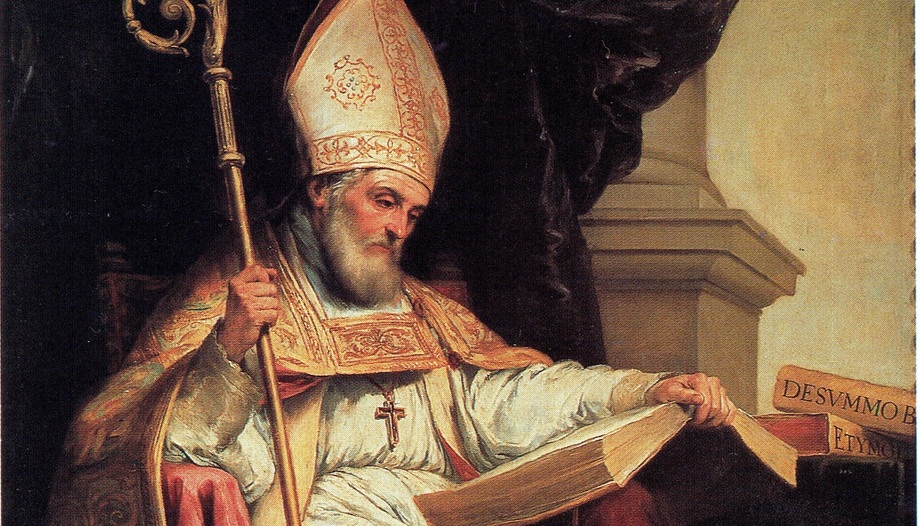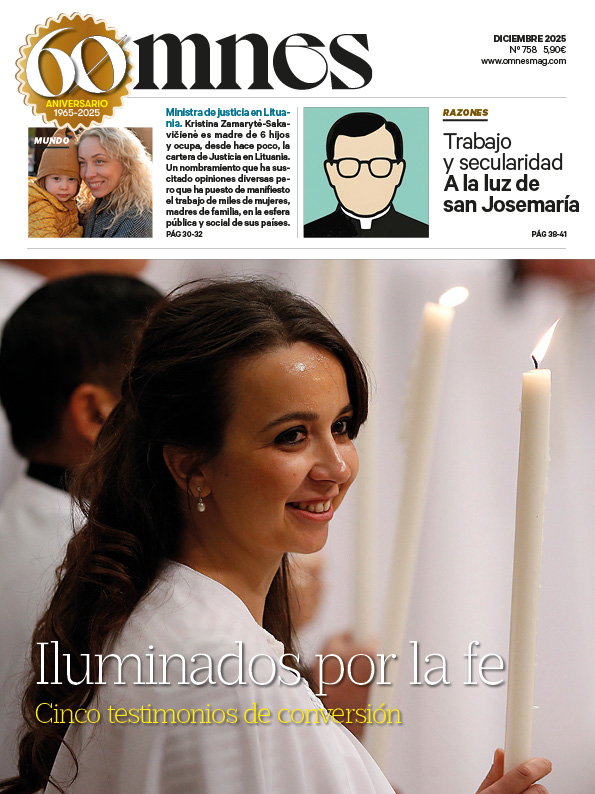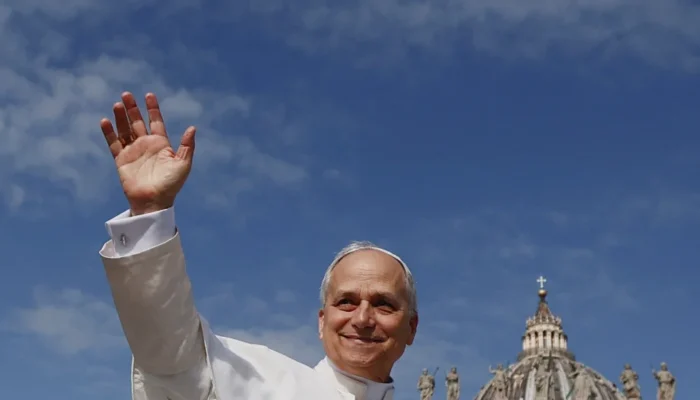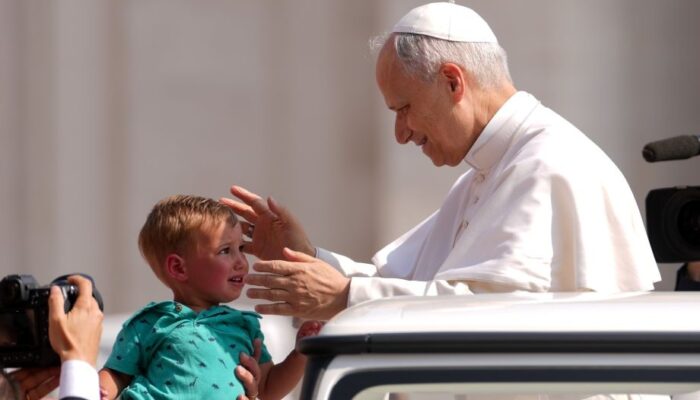The conversion of Recaredo and the Councils of Toledo convened in the seventh century, will mark the fruitful pontificate of St. Isidore of Seville (+ 636), considered the most famous Latin writer of the seventh century and, for some authors, the last Father of the Western Church.
Undoubtedly, his best-known and most quoted work, "Etymologies"will mark his method of work and his style of preaching and government. It is necessary to go to the sources and from them to illuminate the great and small problems of pastoral life and the life of Christians.
Works of Saint Isidore of Seville
Indeed, the "Etymologies" constitute the first encyclopedia of knowledge and learning inside and outside the medieval Church. If we read slowly the BAC edition, for example, we will see that it is a compendium of scientific, humanistic, sapiential, etc. knowledge.
In those tight pages, as was written in ancient times to make the most of the paper, everything that a teacher had to keep in mind in the formation of his subjects was preserved. His "Sentences" are brimming with ecclesiastical science and prelude the future "Sentences" of Peter Lombard (1100-1160) and the same "Summa Theologica" of St. Peter Lombard (1100-1160) and the "Summa Theologica" of St. Peter Lombard (1100-1160). Thomas Aquinas (1224-1274).
We must immediately recall his extraordinary apology "Of the Catholic Faith against the Jews"; also the reminder of Christian customs and Church discipline in "Of the Ecclesiastical Offices"; likewise, he writes the history of the Goths, Vandals and Suevi kings in "The Illustrious Men"; he deals with everything that could be discussed at that time in the two books "Of the Differences"; He comments on the Bible, he dissects dogma and morals, he delights in describing the most minute details of nature... It may be said that his work embraces all the domains of science, from the high field of theology to the most ordinary of the mechanical and sumptuary arts.
Hispano-Visigothic life and culture
Because of his holiness and science, it can be said that he also personifies the life and culture of the Hispano-Visigothic Church. To him belongs the merit of having awakened and consolidated the awareness of the cultural unity of the Germanic and Romanic peoples. Compiler and reworker of the thought of the classics, imbued with the knowledge of his time and fruitful in the literary field, he knew how to expose in his works and bring to the conscience of the Germanic nations the precious heritage of the ancient erudition. This earned him recognition as one of the great masters of the forerunners of the medieval period.
St. Isidore was no less important for national life. Advisor to kings and inspirer of a new legislation, he created a policy of Christian inspiration that, going beyond the Visigothic frontiers, would serve as a model for the policy that would later be imposed in the Christian Empire during the Middle Ages.
From the time of St. Isidore is the magisterium, for example, exercised in Toledo by his archbishops: the two saints Eugenio, San Ildefonso, "river of eloquence", and San Julian; in Zaragoza shine Tajón and the brothers Juan and San Braulio, the latter one of the most representative glories of Visigoth Spain; in Barcelona, San Quirce; in Seville, San Leandro and San Fulgencio; in Braga, San Fructuoso... Spain then has a pleiad of ecclesiastical writers that we can hardly find in the other nations of Europe.
Priestly formation and St. Isidore of Seville
We would like to take advantage of this portrait of St. Isidore of Seville to highlight an issue that is little known to the general public: the importance of St. Isidore in priestly formation until the Council of Trent.
In fact, the IV Council of Toledo is one of the most important councils of the Church in Spain. It was held in 653 and was presided over by St. Isidore of Seville. It was attended by 5 archbishops, 56 bishops and 7 vicars of other dioceses. For our purpose, the study of priestly formation, it is a council of great interest, since it dedicates many canons to the question.
In the first place, it was established that priestly studies should be based on the knowledge of Sacred Scripture and the canons: "so that all their work would consist in preaching and doctrine and serve to edify all, both by the science of the faith and by the legality of teaching" (Council IV of Toledo, c. 25, Mansi 10, 626 ff.).
Then, concrete aspects of this formation were established: "Any age of man from adolescence onwards is inclined to evil; but nothing is more inconstant than the life of the young. For this reason, it was agreed to establish that pubescent or adolescent clerics should all live in an enclosure in the atrium, so that they may spend the years of the lubricious age not in lust but in ecclesiastical disciplines, under the direction of an elder of very good life and experience, whom they all have as teacher and witness of their actions; and if any of these are pupils, they should be protected by the tutelage of the bishop, so that their life may be free of crimes and their goods free from the injury of the wicked".
Isodorian Seminar
With the canons adduced from the IV Council of Toledo and the works of St. Isidore, we are in a position to delineate what has been called the "Isidorean seminary", which will have a great influence in the Middle Ages, both in Spain and in other parts of Europe and, finally, will be taken up in the Council of Trent. In fact, the Decree "pro seminariis", of the Council of Trent, will begin with the same words of the IV Council of Toledo already mentioned.
The first novelty introduced by the Council of Toledo is to call presbyter, elder, the one who until then was called "superior". That is to say, "the elder of a very good and experienced life" succeeds the "superior" in the demands and in what refers to the experience of life and his competence.
Likewise, in the development of the life of this priestly school, there will be a clear reference to "ecclesiastical disciplines", which the students must study in the "enclosure of the atrium", next to the episcopal residence and under the watchful eye of an experienced man who is "prudent in his words and rich in knowledge".
The age of the students was limited to 30 years of age. On the other hand, no new constitutions were written for the life of these schools, since it was understood that the Rule of St. Benedict sufficiently summarized the various questions.
In addition to the teaching of sacred and profane sciences, they were taught to preach, that is, they were given a course of sacred oratory, very practical and aimed at preaching to the people, based on classical rhetoric.
They were also taught both theoretical and practical pastoral experience. Thus, in one of the prayers of the "Liber ordinum", it was prayed in this way: "Lord Jesus Christ. You who opened the mouths of the dumb and made the tongues of children eloquent, open the mouth of this servant so that he may receive the gift of wisdom so that, taking advantage with all perfection of the teachings that are beginning to be given to him today, he may praise you forever and ever".
Pedagogy
The pedagogy, "Institutionum disciplinae", conceived by St. Isidore, was said of these colleges that were instituted and established in three parts: to learn to read, to write and to be readers of the Word of God, that is, to read and comment on the mysteries of God.
It is interesting to note that, a few years later, St. Julian of Toledo, in his "Ars grammatica" insists on the same ideas. St. Ildefonso also adds liturgical chant, which should henceforth be considered an important subject for teaching in these schools.
St. Isidore made explicit in his works the studies to be carried out in these schools. One had to begin with the "Trivium", oriented to the knowledge of Latin; rhetoric, dialectics, literature and rudiments of philosophy. Afterwards, the student would begin the study of the "Quadrivium", that is, arithmetic, music, geometry and astronomy.
St. Isidore, the Bible and other texts
Regarding the pagan poets, Isidore, as the Fathers of the Church had already done, warned the students about their use and taught them to extract the positive part of them and to leave aside the pagan resabios. Once the humanistic studies were finished, the candidates who were considered suitable were ordained as subdeacons.
From that moment on, the theological studies proper began and, with them, the immediate preparation for ordination to the priesthood. In theological studies, particular importance was given to Sacred Scripture, to the study of the writings of the Fathers of the Church, both in their commentaries on the Scriptures and in their dogmatic treatises, and, finally, they studied the canons of the Councils.
As the Council of Toledo summarized, the candidates to the priesthood had to master the Psalter, the canticles and hymns and the way of baptizing. Finally, let us point out that St. Isidore, in his work "De Ecclesiasticis officiis" skipped the doctrine of the Arcanum, as the ancient ecclesiastical writers used to say, and in chapter 24 he wrote the rule of faith. That is to say, the creed that they learned by heart and engraved in their hearts, became public knowledge.
Among the books that could not be missing both in the monasteries and in the schools and that had to be copied in order to have them in the library, were first of all the Sacred Scriptures, the collections of canons of the Church, the books of Sentences of St. Isidore, the Commentaries of Gregory of Elvira and of Justus of Urgel to the Song of Songs, the works of Apringius and the commentary of Beatus of Liébana to the Apocalypse; the works of Tajón, St. Ildefonso of Toledo and St. Julian and, of course, the exegetical books of St. Isidore included in the Etymologies.
When referring to holy orders, the VIII Council of Toledo established the following: "When the presbyteries are ordained to go to the parishes, they should receive from their bishop the official book so that they may be instructed in the churches entrusted to them, so that through their ignorance they may not be irreverent to the divine sacraments". Thus, in Hispania, at that time, sufficient books were available.
Other works
Let us return to the works of St. Isidore of Seville where the profiles of priestly formation are completed and let us point out the most outstanding ones. Indeed, in the "Book of Sentences" written by St. Isidore, the figure of the priest and therefore the priestly formation that he wanted to confer to the candidates is delineated. In it he spoke of the priest as a man of God, affable and charitable, sensitive to the poor and the suffering, modest, obedient, devoted to prayer and silence and, finally, fond of the readings of the martyrs and saints.







